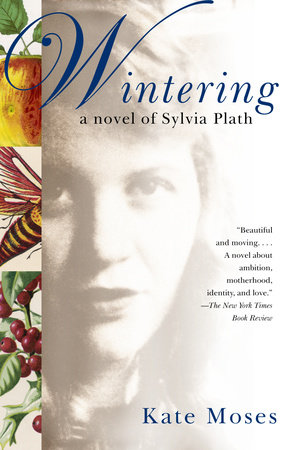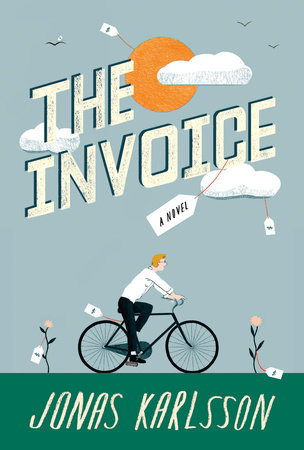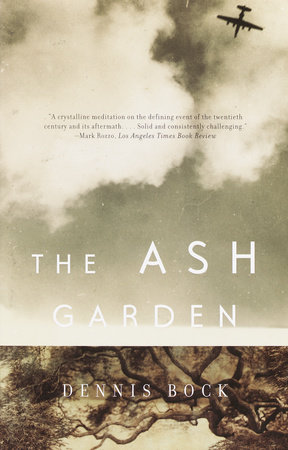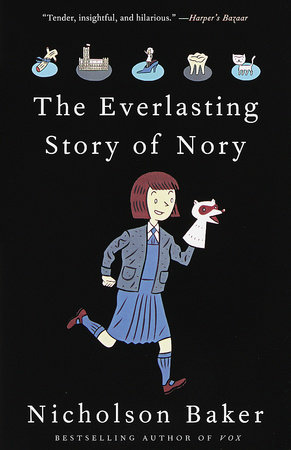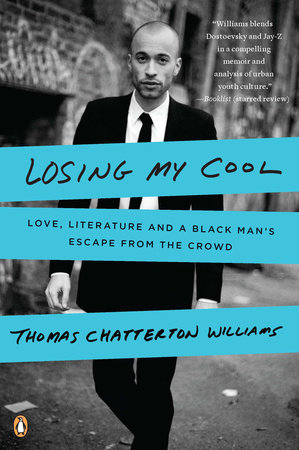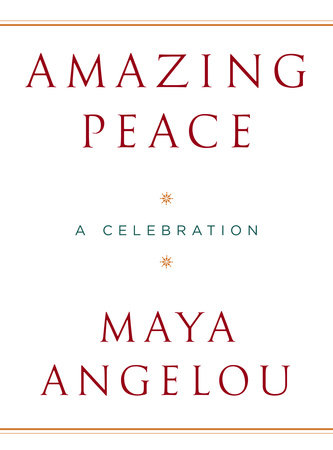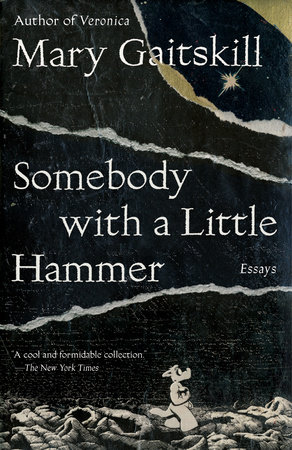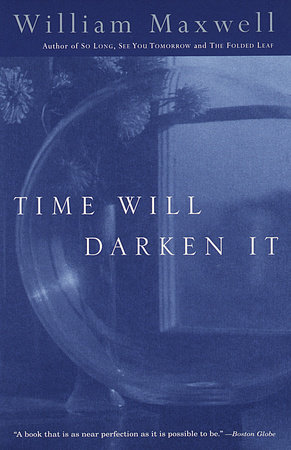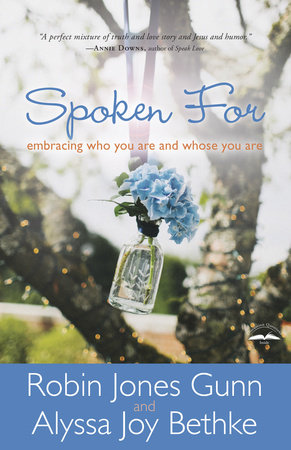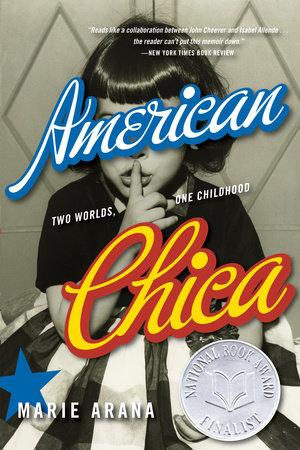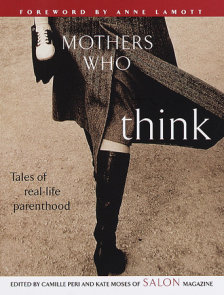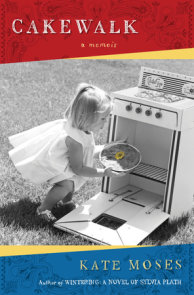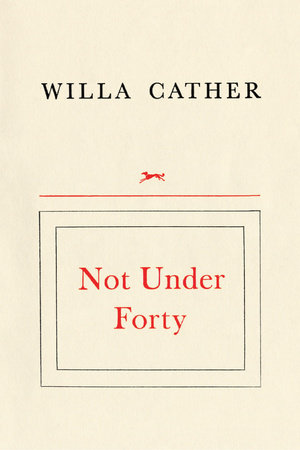Author Q&A
A Conversation with Kate Moses
author of WINTERING
Q: WINTERING is a novel, rather than a biography. What unique challenges does a writer face when writing a fictional account of a real person?
A: It’s easy to assume that a biography is closer to truth than a fictional portrait of a real person. But facts are easy to manipulate, and even when they’re not being consciously toyed with, they can keep you, as the saying goes, from seeing the forest for the trees. The challenge, then, is to find and be faithful to a greater truth about your subject. Fiction can have the advantage of allowing suggestion and subtlety and open-endedness where nonfiction is too overbearing. With fiction, you can feel for a life’s shape.
Even so, I felt a profound responsibility to be scrupulously faithful not just to the greater truth of Sylvia Plath but also to the people who loved her and cared about her and were still alive, mostly her two children, now adults. It was imperative that Plath’s children be primary characters in WINTERING, but I drew the line at appropriating the facts of their childhoods, since the stories of that time and the poems and letters and journal entries that Plath wrote about them are their legacy. I resolved this problem by asking my own two children, who are now 6 and 14 years old, if I could use them as models for the children in my novel. Luckily for me they graciously agreed to let me ransack their babyhoods for material.
Q: You did extensive research to make it as historically accurate as possible. What was the most surprising thing you discovered about Plath?
A: Plath lived in London’s Primrose Hill neighborhood twice: first at 3 Chalcot Square in 1960-61, then 23 Fitzroy Road when she moved back in December 1962 to remake her life alone after her separation from Ted Hughes. But Plath’s biographies don’t tell us just how close these two locations are–about a block and a half apart, just around the corner from each other. You can see them both at the same time from the nearest intersection. By moving to Fitzroy Road, Plath consciously chose to be the neighbor of Ted Hughes’ lover, Assia Wevill, who had taken over the lease on the flat at Chalcot Square when Plath and Hughes bought Court Green, their house in Devonshire, and began an affair with Hughes after a weekend visit to Court Green. I felt sick when I saw how close Plath was living to Assia–at any time they could have run into each other at the post office, the market. . . the last thing someone as devastated as Plath would have needed. Can you imagine how awful it would have been not just to see your husband’s lover in your neighborhood, maybe even to run into them together, but to know she was living in the home you’d once occupied with happiness and optimism? And yet no one in her life advised Plath, “Don’t go there, girlfriend.”
Q: What inspired you to write WINTERING, set during the time Sylvia Plath wrote her collection of poems, ARIEL?
A: As fascinating and enriching as I found Plath’s poetry to be, she didn’t make complete sense to me. Something didn’t fit. But four years ago while rereading her Collected Poems, I noticed something that had never sunk in before: in his introduction, Ted Hughes states that Plath’s Ariel manuscript of forty-one poems was never published as she’d carefully arranged it, and in the notes section of the Collected Poems he gave Plath’s original order. Suddenly I couldn’t sleep without reading the poems as she’d intended them. When I read Plath’s version of Ariel, it all made sense. She made sense. This wasn’t someone who was fixated on death–she was fixated on life. She was using the poems to tell herself a story of how she would save her life after the devastating end of her marriage. Plath’s Ariel is a bid for survival, the polar opposite of the Ariel we all know. I couldn’t believe that something so important as her own artistic vision could have been overlooked for so many years. Yet it had; this was the story about Sylvia Plath that she hadn’t lived to tell, and no one else had told it for her. When Plath was writing the Ariel poems she’d told to a friend that she felt like she was being “pulled through the intestine of God.” That pretty much sums up how I felt about being confronted with the story of Plath’s Ariel. It was a story I had no choice but to tell.
Q: The Anchor paperback edition of WINTERING includes a factual chronology of the events in the novel. How is this helpful for readers understand your novel?
A: The chronology supplies the clean boundaries of fact that are otherwise blurred by the term “fiction.” Especially with a writer like Plath, about whom so much has been speculated, I feel it’s important for her artistic legacy that a book like Wintering adds to an understanding of her as an artist and a person rather than confuses matters further. I don’t think the chronology is necessary to understand or appreciate the novel, but it’s a great clarifying tool for readers who are curious about the real Plath. Did she really rip the phone out of the wall? Did she really ever ride Ariel? Did she really dream of daffodils? Now readers can discover the answers to those questions, and unlike a freestanding chronology, this one is placed in a carefully considered context, so the whole is not just a regurgitation of factoids but an interpretation of their relevance.
Q: I assume you’ve always loved Plath’s writing. What is your favorite Sylvia Plath poem or novel?
A: Actually, I didn’t always love Plath, and in fact found her terrifying when one of my college professors handed out copies of “Daddy” and “Lady Lazarus” while telling us that Plath gassed herself at the age of 30, leaving her children in their cribs upstairs. Given that introduction it’s no wonder that I was terrified when I read her poems, and I didn’t seek out her work again for a decade. Then when I was eight months pregnant with my son, who’s now almost 15, I came across Plath’s poem “Morning Song”, which is about a young mother waking at night to nurse her newborn infant. It’s still one of the most original, emotionally astute poems about motherhood that I’ve ever read. I’d have to say that this poem remains one of my two sentimental favorites. It also happens to be the poem that Plath chose to begin her Ariel collection, so it’s an odd coincidence that it’s the poem that opened my eyes to Plath. It’s probably not surprising that my other favorite poem of Plath’s is “Wintering.”
Q: There are many self-proclaimed and devoted “Plathites.” Why is there such a strong fascination with Sylvia Plath in our culture?
A: Those of us who find ourselves in Sylvia Plath’s slipstream are in some way struggling against her death: how could it be that someone so gifted, with so much to live for, young and lovely and with two tiny children, could have lost control so utterly? I think in some ways we replay the details of her life and her art in order to find the “out” or the key–was there a moment when things could have turned out differently? Was there a moment that sealed her fate? As if somehow, if we could discover that moment, we could magically keep her from her death. But there’s another reason, I believe, for Plath’s lasting cultural impact: her work’s genius. Her poetry really does go straight to the bloodstream; she was able to telegraph her inner life in the most vivid, IMAX format, but not as raw emotion. Plath’s poetry continues to be relevant and eminently readable because she used her formal poetic training to break free of the rules, and then she used her artistic audacity to upstage and ridicule those rules. The result was a mid-century meteor, a uniquely American, womanly, fearless voice.
Q: What do you think about the movie, “Sylvia” with Gwyneth Paltrow.
A: This film is now part of a tradition of big-budget, mainstream films about women artists–think of Meryl Streep playing the Danish writer Isak Dinesen in “Out of Africa,” or “Angel at My Table” about New Zealand writer Janet Frame, or Salma Hayek’s film about Frida Kahlo, and of course last year’s hugely successful “The Hours,” based on Michael Cunningham’s novel about Virginia Woolf. In every case, the work of these artists has experienced a renaissance, with their books reissued and their art rediscovered. What’s great about this is that it shows that women artists can have real economic muscle, and that their work and their stories are just as culturally and commercially viable as those of male artists.
Q: What has been your most unexpected response to WINTERING, either critically or socially?
A: When Wintering was published in England I was invited to read at the Chalk Farm Library, which had been Sylvia Plath’s neighborhood library in Primrose Hill. The librarians there had been warm and generous toward me during my research and it was incredibly touching and flattering for me to be invited back to read. The reading alone, for which the entire neighborhood turned out, would have been memorable enough for me. But after my reading, while I was signing books and everyone was drinking wine and eating homemade cookies, an elderly, elegantly dressed gentleman stepped up to the table. It was Dr. John Horder–Sylvia Plath’s beloved doctor who had struggled, in vain, to keep her alive when she was plummeting toward suicide. In the last weeks of Plath’s life, Dr. Horder had been in daily contact with her, and was desperately trying to get her into hospital when she died. I knew that for many years he had kept a vow not to speak about Sylvia Plath. But here he was, willing to show up at my reading and reveal himself in front of all his lifelong neighbors and friends and patients–and thanking me for my “compassion” toward a patient whose loss forty years before still caused him visible grief. When I got back to my hotel room, I sat on the bed and cried like my heart would break. Though I’ve since had support from other friends and relatives of Sylvia Plath’s, nothing has touched me like meeting Dr. Horder.
Q: How did Diane Middlebrook, the acclaimed biographer of Anne Sexton and now author of HER HUSBAND: HUGHES & PLATH, THEIR MARRIAGE, come to play a part in the writing of WINTERING?
A: Early in my work on Wintering I heard that Diane Middlebrook was writing a nonfiction book about Hughes. I’d read her brilliant biography of Sexton and hoped she might be able to answer some of my questions about Hughes, so I contacted her. At our first meeting it was obvious that our books had a deep synchronicity even though we were approaching our mutual subject from opposite sides of the mirror. And, it turned out we were neighbors living only a couple of blocks from each other in San Francisco. We ended up becoming incredibly close as collaborators and friends, trading our archives of research and unearthing material for each other and meeting for long afternoons over tea to hash out our ideas. Writing, especially fiction or biography, is intensely isolating and solitary most of the time, especially since chances are that no one you know understands the machinery of your imagination, or the underlayers of your research — or cares about it the way you do! Diane and I were working the same territory to different ends, so we were free to be entirely open and generous with each other. It was a great partnership while we were writing and researching, and now that Diane’s book and the Wintering paperback are coming out at the same time, we get to live out our fantasy of talking about our work together in front of an audience.
Q: Tell me about your work as one of the co-founding editors of Salon.com’s “Mothers Who Think” web site. How did your work with “Mothers Who Think” influence this novel?
A: Though I’d decided when I was four years old that I wanted to be a writer, it was motherhood that gave me something to say. Everything I do now gets filtered through my experience of being a mother; it radically shifts everything, even your understanding of your past. I’ve been surprised by how much motherhood has enriched my imagination and given me more to think about–which was why I helped create “Mothers Who Think” at Salon.com. Similarly, Sylvia Plath felt her real creative life began when she became a mother.
What’s painful and difficult, though, is that children and artistic production require the same full immersion and focus–so if you’re trying to do both, you find yourself in a Gordian knot. Part of the reason I wrote Wintering was to address the uneasy relationship between motherhood and artistry. Motherhood can give you such keen technicolor insight, but it can also be so engrossing and exhausting that you can’t do anything about what you’ve learned. Which makes Sylvia Plath’s imaginative fluidity during the Ariel period all the more astounding–two children in diapers, no heat, no phone, no relatives, sleepess, virtually no help. . . . Yet Plath’s children freed her imagination at the same time that raising them was surely the hardest job she ever had, just as it is for all mothers.
As a young mother I gasped at the inconceivability of Sylvia Plath’s suicide. How could she have done it, how could she have left them? One of the lessons I learned through writing Wintering and through becoming older and wiser as a mother is that, on some levels, it’s not that inconceivable, especially given the awful, impossible circumstances at the end of Plath’s life. I wondered what other mothers would think of Plath when they read Wintering, and over and over readers have said to me, “Now I understand. . .”
Q: What’s next for you? Would you like to further explore the historical fiction genre?
A: I’m fascinated by the idea of the creation of the self, and how circumstances and events and places can shape who we think ourselves to be. I also love how the sweep of events can act almost as a character–Wintering’s depiction of the Big Freeze, for example, or even the foreboding knowledge of the real Sylvia Plath’s death. My second novel is about the year 1989, a year of world-changing revolutions and shake-ups: Tiananmen Square, the falling of the Berlin Wall, the Romanian revolution, and the San Francisco earthquake to name a few. So it’s definitely historic, but it’s also, like Wintering, an interior story about personal revolutions.
At the same time, my MOTHERS WHO THINK coeditor, Camille Peri, and I are at work on the second MOTHERS WHO THINK anthology.
